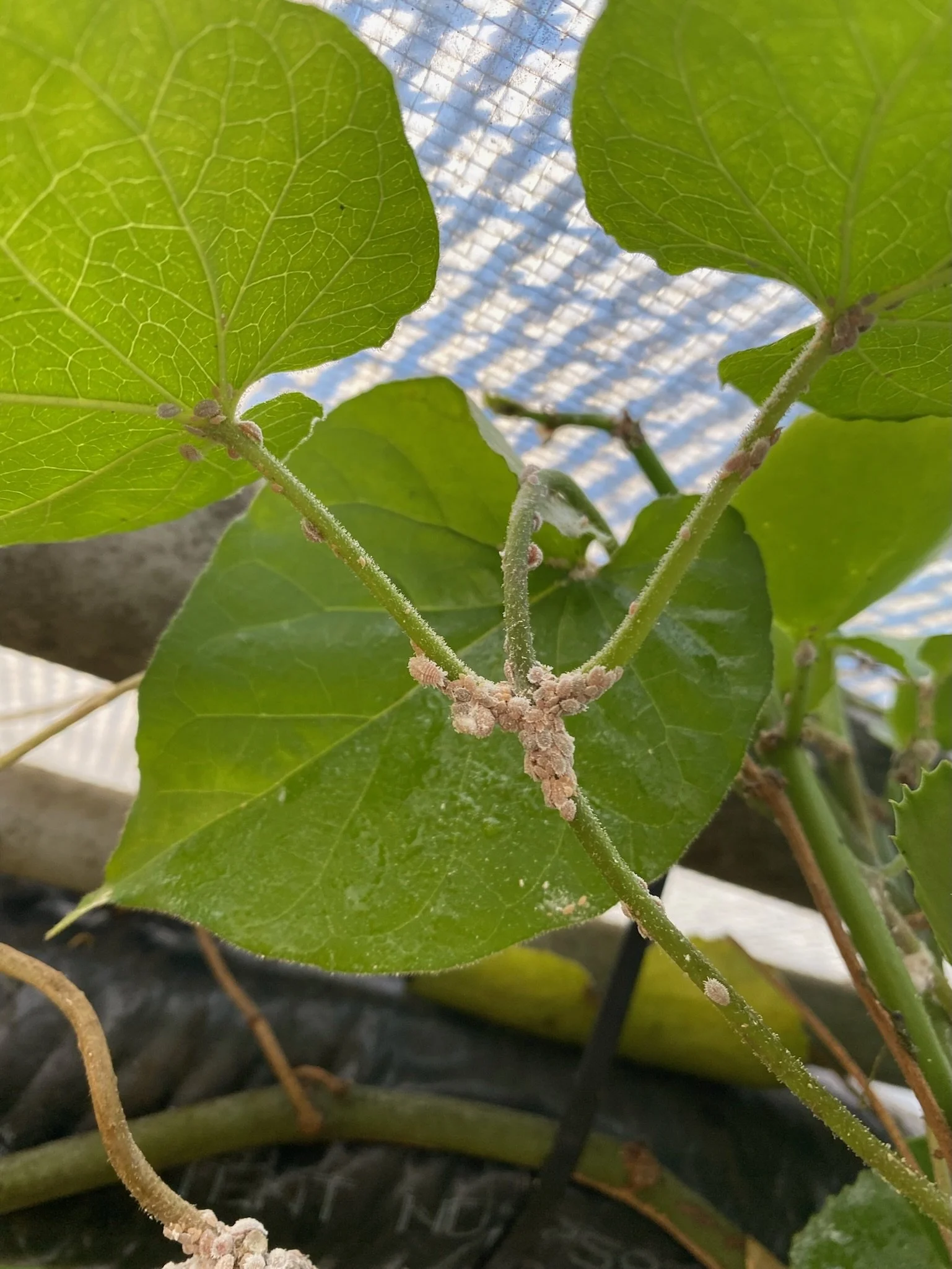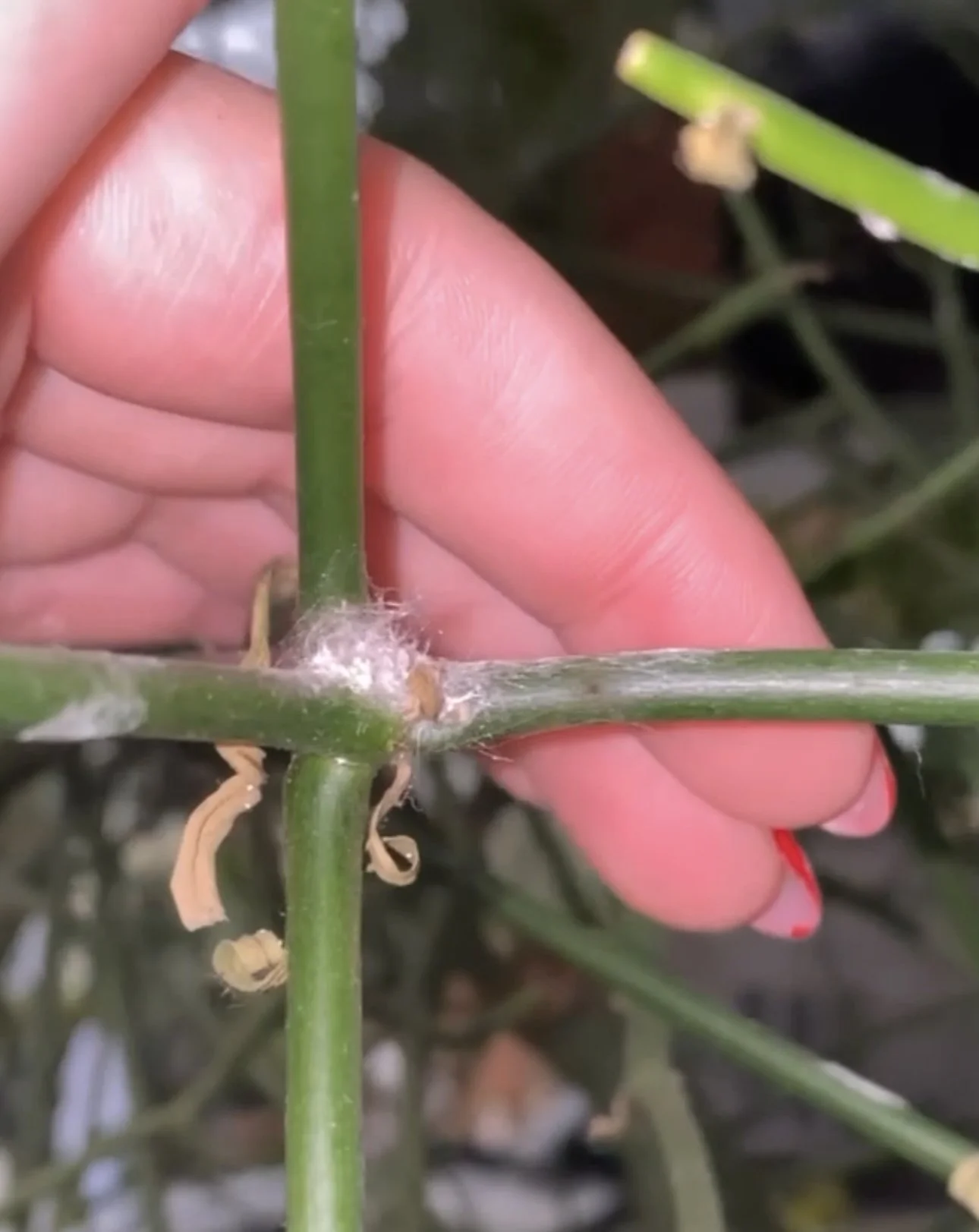All About Mealybugs
Perhaps the most infamous and easily identifiable pest your plant can be plagued with, mealybugs often appear in cottony clustered masses on the underside of your plants leaves, in stem joints, and any hidden crevices of your plant.
Mealybugs are in the same family as scale, so their feeding pattern and damage are similar. They feed by sucking sap which can result in yellowing leaves, stunted growth, and, if left unchecked, plant death. They secrete a sticky honeydew substance which can lead to sooty mold and attract other pests.
The main difference between soft scale and mealybugs is that soft scale loses legs once they reach adulthood and become immobile, while mealybugs have legs and remain mobile through their entire lifecycle.
The cottony white webbing harbors crawlers and mealybug eggs, but you may see lone crawling mealybugs rummaging around your plant foliage as well. The crawlers are often white, oval, and have small wispy legs around their bodies– some species of mealybugs even have pronounced antennae or long tails. They tend to prefer plants with thicker foliage like hoya, monstera, and succulents, but can be found on any plant.
The Cure
As we always say, everyone has their own methods for pest treatment, but here are some that have worked for us.
The first step is always to isolate your plant, wash your hands and any tools you use on the affected plant to mitigate the spread of your pest issue.
Like scale, it’s important to remove all the mealybugs you can see from your plant, taking care to check any crevices they could be hiding in. Simply spraying your plant with a contact killer won’t be effective enough to eradicate all the mealybugs because they’re waxy outer layer can make them resistant.
Cultural practice suggests alcohol on a q-tip and a grueling removal process, but this practice can miss any nymphs that you can’t see with the naked eye and dry out your plants’ foliage. We suggest castile soap or a horticultural oil on a microfiber cloth for removal… plus some elbow grease. It can also be helpful to spray pressurized water, or a water/pest treatment combo, on the plant to achieve thorough removal– just be careful not to overwater your plant.
If the infestation is more than mild, we suggest spraying the plant down with insecticidal soap– Suffoil-x, Ultra-Pure, neem oil– after removal. You can also introduce beneficial bugs like green lacewings and let nature do its thing.
Repeat spray treatment weekly as needed.
Mealybugs can also live in the root system of your plant. If you have an infestation in your root system, you’ll want to remove the affected soil, carefully spray down the roots to remove any mealybugs, and refresh the soil. You can add a layer of diatomaceous earth to the top layer of soil to kill any eggs or bugs you may have missed.
For a severe infestation, an imidacloprid systemic pesticide should do the trick. Granular systemic is sprinkled in the soil and watered into the plants’ root system. From there, the systemic makes your plant toxic to pests and they’ll die off as they feed. Just be sure to follow the application instructions and protect your skin and eyes.
Prevention
The key to pest prevention is checking up on your plants regularly. Thoroughly check any new plant you bring home for pests or pest damage, taking care to check the root system if possible– you can quarantine new plants until you’re certain they are pest free or even dip foliage in castile soap diluted with water.
Dusting your foliage regularly is a care ritual that will not only help your plants to photosynthesize more efficiently, but will also help you keep tabs on pest issues.
Introducing beneficials is an easy and effective way to prevent pest issues in your home. Regularly apply the beneficials as directed and watch nature do its thing!
As always, if you have any questions or need a hand with pest management, feel free to reach out to us!
Don’t bug out,
Kelly




